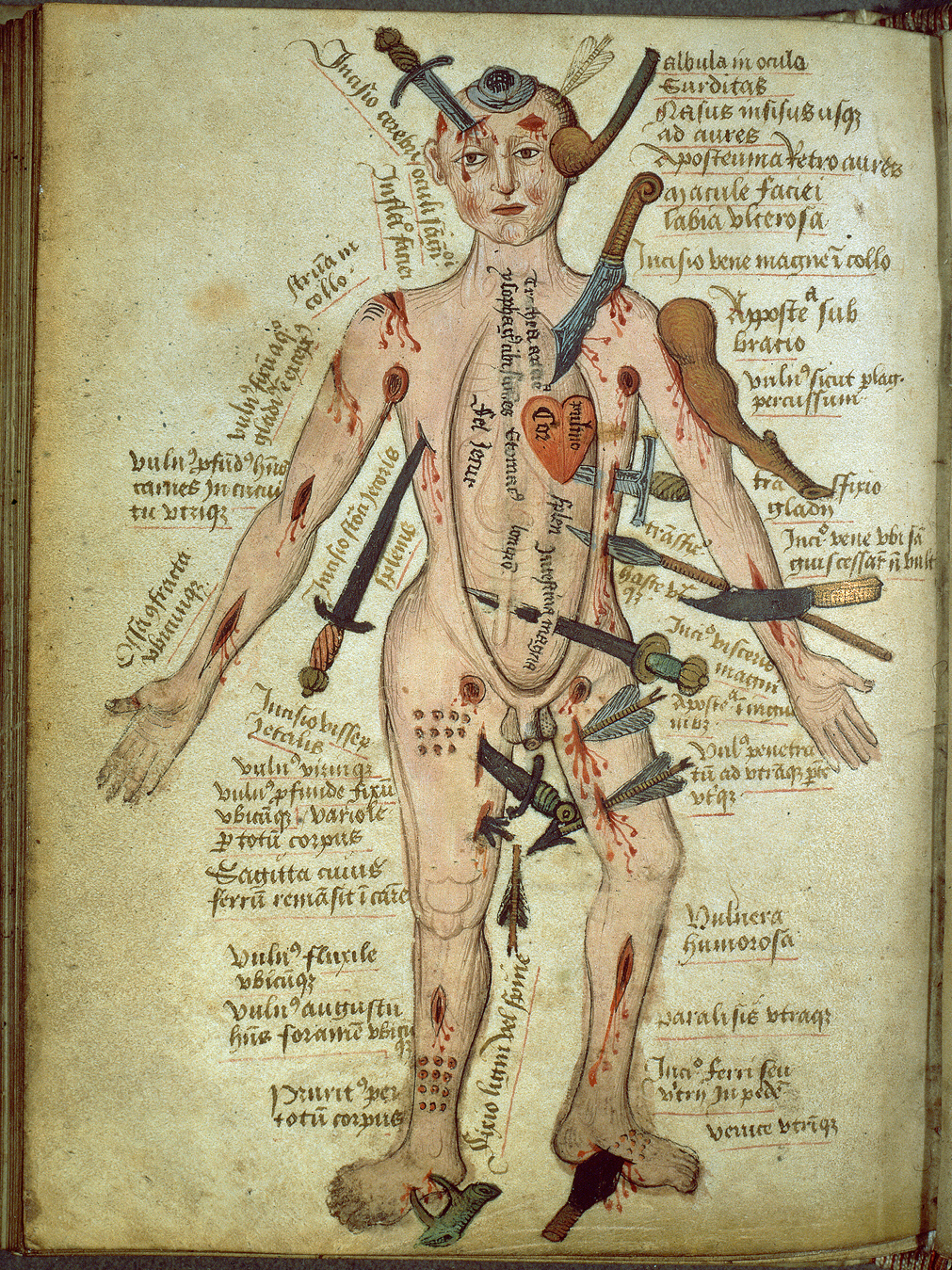Penetrating trauma and “The Wound Man”
Article information
A famous Japanese politician was recently shot twice in the neck, which caused hypovolemic shock, and he showed no vital signs on arrival to the hospital. The weapon was a hand-made gun (do-it-yourself gun). This case reveals that gun violence cannot be totally eliminated even in countries with tough gun laws, where citizens are prohibited from buying or owning firearms.
Gunshot wounds are the second most common cause of penetrating trauma, following stab wounds. Stab wounds occur four times more often than gunshot wounds in the United Kingdom, but the reported mortality rate associated with stabbing is 0% to 4% because 85% of stab wounds only affect subcutaneous tissue [1].
This tragic affair of a penetrating injury reminded me of an unforgettable drawing, “The Wound Man,” which I saw years ago in the Wellcome Library, near the British Library (London, UK) (Fig. 1).

"The Wound Man (MS 290, folio 53v; after 1491; 18×13.5 cm)” from the Wellcome Library. The illustration acted as a table of contents, pointing the reader to various injuries whose related treatments could be found on the text's nearby pages. Adapted from Hartnell [2], courtesy of the Wellcome Library.
“The Wound Man” is a surgical diagram that is enigmatic and troubling. A man’s skin is covered in bleeding cuts and lesions, stabbed and sliced by knives, spears, and swords of various sizes, many of which remain in the skin. The violence and illness shown on the man’s body are all-consuming and total. This diagram first appeared in European medical manuscripts of the 14th and 15th centuries. The illustration served as an annotated table of contents to guide the reader through various injuries and diseases, the cures for which could be found on the text's nearby pages. The image first appeared in a printed book in 1491, when it was included in the Venetian Fasciculus medicinae, which was likely Europe's first printed medical miscellany. It circulated widely in printed books until well into the 17th century [2].
The basis of “The Wound Man” is thought to be regional anatomy and physiology. Regarding the importance of functional anatomy in gunshot wounds, a story about Ambroise Paré (1510–1590) has been transmitted. Dr. Paré, in the French army, used a novel technique to aid in bullet extraction. During a battle, a courtier (Maréchal de Brissac, 1505–1563) was shot in the shoulder. When finding the bullet seemed impossible, Dr. Paré had the idea of asking the victim to put himself in the exact position he was in when shot. The bullet was then found and removed [3]. I think this pioneer of modern trauma surgery also read “The Wound Man” and applied it in his practice as a barber surgeon.
Trauma surgeons need a handy atlas and manual. If we make a booklet including the regional anatomy for each penetrating wound in a two-dimensional diagram, as well as a three-dimensional visualization, this book would be a successor to “The Wound Man.”
Notes
Ethical statements
Not applicable.
Conflicts of interest
Kun Hwang serves on the Editorial Board of Journal of Trauma and Injury but was not involved in the peer reviewer selection, evaluation, or decision process of this article. The author has no other conflicts of interest to declare.
Funding
This study was supported by the National Research Foundation of Korea (NRF) grant funded by the Korean government (No. NRF-2020R1I1A2054761).
